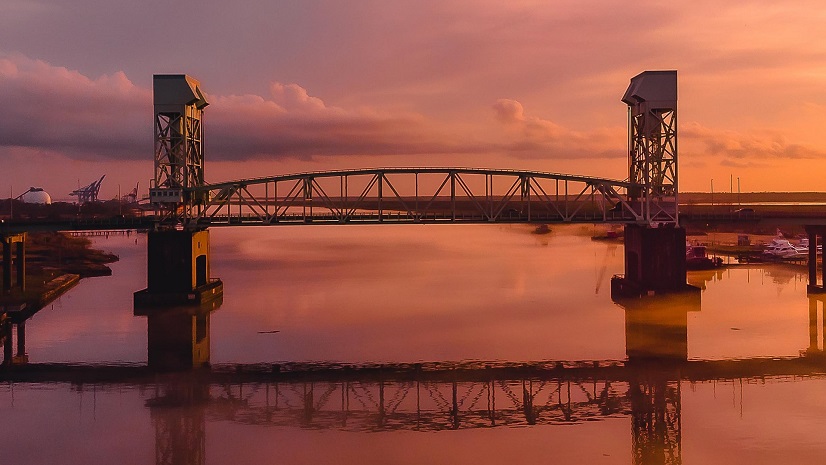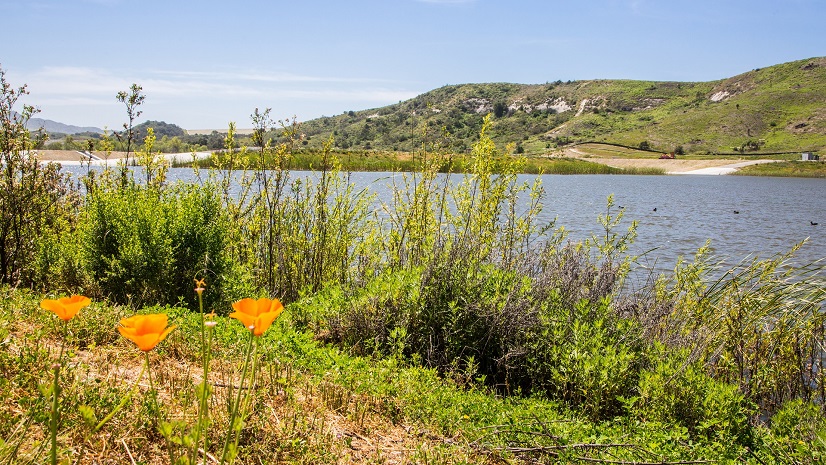Government mandates require Public Water Systems (PWS) to complete an inventory documenting water service line material. The goal is to remove all lead service lines (LSLs) and lead-tainted galvanized pipes. Leaders of communities large and small across the country are working toward compliance. Critical deadlines have been identified in Indiana and there is an expectation from state and federal agencies to have local PWS continuously update and periodically submit these inventories.
For many Indiana PWS, these requirements are arduous, overwhelming initiatives with significant knowledge barriers and resource challenges. Communities are unsure of where to begin. When they do begin, they are faced with incomplete or erroneous water records, additional staff workload, and a lack of digital tools to improve speed and data accuracy for inventory submittal.
Funding through the Indiana Department of Environmental Management (IDEM) and the Indiana Finance Authority (IFA) has provided PWS with some needed support. This funding was provided to PWS in two funding year cycles: 2023 and 2024. The available funding was dependent on the community’s total water service lines.
Communities were eligible for $15,000–$45,000 in noncompetitive grant dollars in round 1, with no match required. Round 2 offered $100,000–$300,000 in competitive grant dollars. The state later designated third-party consultants and technology firms to manage the workflows for PWS in their journey. This relieved the burden and strain on PWS daily operations.
Abonmarche is consulting for many of these communities in compliance with the mandates. However, our aim is higher than simply completing minimum inventory requirements.
Abonmarche had already begun developing service line inventories and replacements before the federal mandate and Indiana work. In 2018, LSLs played a central role when Michigan strengthened its Lead and Copper Rule (LCR) under the Michigan Safe Drinking Water Act. Under the new rule, community water supplies with lead service lines had to sample both the first and fifth liters out of the faucet when conducting required lead and copper monitoring.
In 2021, routine testing revealed that over 10 percent of water samples in Benton Harbor exceeded the lead action level of 15 parts per billion (ppb). This prompted immediate public health interventions, including the distribution of water filters and bottled water to residents. Recognizing the urgency, Benton Harbor initiated a comprehensive lead service line replacement program. By November 2022, the city had successfully replaced 100 percent of its lead service lines, significantly reducing the potential for lead exposure through drinking water. The city, with help from Abonmarche, successfully identified and/or replaced 4,500 service lines. Benton Harbor’s PWS was able to complete the work in under nine months, garnering high praise and even an award from the US Environmental Protection Agency. Abonmarche used this unique experience to jump-start 16 PWS water service line inventories across Indiana—first, securing grants, then administering funds to develop inventories.
“It was inspiring for us all to witness how so many city leaders leveraged the available GIS technology toward the inventory. Every GIS solution provided to these communities was dynamic in its design, and custom tailored to accommodate the community’s demographics, culture, and history. Some of the solutions built around community engagement, like ArcGIS Hub, empowered residents to engage with the city leaders in a way like never before, thanks to GIS technology.”—George Nikokiris, Abonmarche
Indiana’s PWS lead service line inventory submission deadline was October 16, 2024. Submissions were made digitally to IDEM in an online geographic information system (GIS) technology-based data portal. The IFA offered grants of up to $45,000 for communities with at least 900 water service connections. Indiana also set aside approximately $43 million each year from 2022 to 2025 to assist over 5,000 communities with their LSL replacement programs.
A multidisciplinary approach has been key to the Michigan and Indiana LSL inventories and replacement plans. This is because there are tasks associated with civil engineering, heavy equipment operation, municipal or PWS staff intervention, data collection, manipulation, management, public relations, project oversight, and more. Engineers must create preliminary engineering reports. Municipal or PWS staff have strong understanding about system assets and how best to digitally collect data. Data scientists must scrub existing data, develop or configure data-collection apps and evaluation tools, and create statistical and machine learning models on the furnished data. Finally, public relations representatives must inform the public about safety, compliance, and buy-in. Without any of these, the project slows or stops.
Project Delivery Sites
We offered all our partner clients an Esri ArcGIS Online technology-based platform, known as a Project Delivery Site (PDS), to host their communities’ GIS data and provide their residents with a cloud-hosted, 24/7 accessible micro-website that kept everyone current on project progress. Each PDS is essentially an ArcGIS Online site, managed and administered by both PWS and Abonmarche staff. Each PWS was allowed to concentrate on content without needing to understand how to administer ArcGIS Online. After project completion, each community was entrusted with the functional GIS environment. On-the-job training, standard operating procedures, and support are always available.
Since the PDS sites are essentially platforms based on ArcGIS Online technology, they contain the same tools and capabilities. This includes a hub site created using ArcGIS Hub, an easy-to-configure community engagement platform. These hub sites organize people, data, and tools through information-driven initiatives and offer community engagement through surveys, education, and FAQs. Think of a hub site as a simple website for public consumption. Each hub site includes the community’s unique messaging, logo, and other branding elements.
Public Water System Partnerships: Providing Value-Added Solutions
Different types of side projects were undertaken in several partner communities to help synthesize data from multiple avenues in the overall process of developing an initial lead service line inventory. These projects included the digitization of historical water infrastructure records (as-built drawings; documents of record; tap cards; and, in some cases, housing development narratives from public meetings). Another project type included converting existing GIS water infrastructure data into a more compatible and comparable data schema. Finally, a third project type included using GPS receivers to collect the accurate location of water infrastructure components (e.g., water meters, access pits, and curb stops).

Case Study: City of Knox, Indiana
The city of Knox has around 3,600 residents. It is the county seat of Starke County in northern Indiana, an area with a classic American feel and strong community roots. Knox’s mayor, Dennis Estok, addressed residents’ concerns regarding the impact of this inventory program. He was instructional on the type of public outreach and language used to assuage fear and reduce confusion.
Community Engagement
Estok and his staff desired a solution that consolidated information and utilized specific program FAQs. Residents were offered important information about the program’s goals and what exactly they could expect to happen throughout the process. Communication in smaller communities is magnified, so the approach ensures that residents are correctly informed early on with plenty of facts and answers to possible scenarios.
Identifying Needs and Building a Solution
Like other communities, the City of Knox identified engagement needs with specific guidance on timing and messaging content. Since the city already had ArcGIS Online platform, an LSL hub site was easily set up. It used the same coloring and branding as the city’s official site. The hub site was populated with loads of information about the Lead-Safe Knox program so that residents could understand quickly and receive timely updates without flooding city staff with calls.
Knox’s unique local culture was considered when targeting area businesses and residents. Knox’s plan included sharing water service information via door hangers, flyers, postcard mailers, and utility bill inserts. Residents could understand the program’s goals through self-education, alleviating pressure on city staff to field calls and emails. The hub site also contained a link to the city’s official website. Knox continues to use its hub site as the central repository of information about the Lead-Safe Knox program as well as to connect residents to LSL information.

“We found the hub site to be exactly what we needed in communicating the program’s goals to our residents. The concentration of information in this repository was efficient, and our staff pointed residents in the right direction.”—Dennis Estok, Mayor of Knox, Indiana
Case Study: City of Auburn, Indiana
Auburn, Indiana, known for its rich automotive heritage, is a thriving community in DeKalb County with a strong commitment to infrastructure and public health. As part of nationwide efforts to address lead contamination in drinking water, Auburn is actively working on its LSL inventory and replacement program.
Specifically, Auburn staff took advantage of water service line material surveys as part of Esri’s Lead Service Line Inventory solution. Hundreds of residents uploaded photos of their service lines, using an ArcGIS Survey123 module embedded within the city’s hub site. Residents could also set up appointments for a staff visit. The process ultimately became an inexpensive way to build resident support and compliance. Residents’ being contacted directly and performing self-assessment cost a fraction of the expense of Auburn potholing to expose and identify service line material.
The City of Auburn utilized the continuous live data submissions by residents’ self-reporting to QC, review, and convey to the public the overall progress. Auburn’s water superintendent, Randy Harvey, and his team directed the early adoption of GIS-based dashboards and apps, which provided residents a chance to get familiar with the process and allowed the rollout of the LSL survey to be more gradual. Less urgency resulted in less stress as well as higher consumer confidence and compliance.
Communication was key to achieving this level of commitment. The diversity of Auburn’s population necessitated bilingual communication and survey forms. This aligned well with later EPA Lead Service Line Improvements requirements. These requirements spelled out mandatory access to bilingual resources as well as visual and auditory options for people with disabilities. These were already built into hub sites, requiring no additional configuration. In fact, the solution had mostly out-of-the-box functionality and an easily configurable interface, allowing modification for a variety of applications and goals. The geocoded survey addresses were included in the machine learning model criteria to determine potential lead pipe concentrated areas.

Auburn’s hub site functioned as an outreach and educational platform as well as the survey-response submission and collection point. City staff performed QC on self-assessment responses and ensured that good data was fed to the lead prediction model. This drove decision-making for the pipe replacement prioritization phase to follow.
A hub site was also used to support EPA-mandated public notices for residents and businesses that had service lines classified as suspected or identified lead or galvanized pipe in contact with lead. Mail merge, a URL link, and a QR code were incorporated into postcard mailers. Only specific residents with concerning water pipes were sent mailers, which provided site-specific content access on the hub site. This ensured that residents with safe pipes were not notified unnecessarily. Ultimately, Harvey and other stakeholders determined the final direction and wording of the information for the hub site and all other communication outlets.
“We found the hub site and self-assessment survey highly effective in getting us started on our journey. The access to live data and the ease of administering these tests through GIS relieved a lot of pressure on our staff. The concentration of information on our hub site made it easy to communicate the goals of our program to residents.”—Randy Harvey, Water Superintendent, City of Auburn, Indiana
Case Study: Town of Hamilton, Indiana
Town of Hamilton Lead Service Line Inventory
Sometimes, overworked PWS staff needed support in the field. Grant funding allowed community outreach representatives to assist in door-to-door home visits. A typical visit to identify service line material took around 10 minutes.
For the Town of Hamilton, a web application built with ArcGIS Field Maps Designer simplified, standardized, and expedited the home-visit process. Data was collected live in the field and recorded with iPads. This made it possible to track success rates. Documenting the need for return visits to any customers who were away or indisposed was simplified by adding an option to identify that a return visit was required. Parsing the success data and missed opportunities enabled the development of better strategies. After a few days of data collection, a simple comparison of success rate versus time of day during each visit led to scheduling field crews earlier or later in the day in certain areas. The user-friendly design of Field Maps allowed for quick data entries in the field.

The home visit crews used a few weekends in August to capture data from 202 successful home visits before seasonal residents packed up to leave for the year. The town manager and water superintendent of Hamilton were pleased with the results.
“We are known as a vacation community, and I knew capturing the data needed for the inventory would be a challenge, given this fact. With so many configurable GIS tools to record the information, we found the right solutions that fit perfectly to our community’s needs.”—Brent Shull, Town Manager, Hamilton

Case Study: Town of Hebron, Indiana
Hebron, Indiana, a small but growing community in Porter County, is committed to maintaining a safe and reliable drinking water system for its residents. To comply with federal and state regulations, Hebron utilized hydroexcavation (aka potholing) to build its LSL inventory efficiently. This nondestructive digging method uses pressurized water and a vacuum system to safely expose underground utilities, minimizing disruption to streets and properties. By leveraging hydroexcavation, Hebron accurately located and documented service line materials, ensuring compliance while protecting infrastructure and reducing costs associated with traditional excavation methods.
Before excavation could occur, system analysis identified the best locations to hydroexcavate, providing the most suitable data for the machine learning model. The need for this step is a testament to the expense associated with excavation. Although many factors are fed into a model, a simple hypothetical instance can illustrate the point: If a sizable percentage of the service line material in a subdivision is known through records, home visits, or customer survey submissions, selecting a potholing site nearby is less valuable since a high confidence value may be achieved based on existing known values. On the other hand, if the water line material is relatively unknown in a section of town, potholing may be a desirable choice, barring more cost-effective methods, because even just a few known materials among unknowns can statistically raise the confidence level of a model.
When determining excavation locations and performing the work, management, and oversight of contractors were often recommended to ensure that money was well spent. The Town of Hebron utilized LSL funds to pothole over 50 locations successfully during a two-week period.
Potholing crews were provided with ArcGIS Field Maps to manage all important aspects of the process. ArcGIS Field Maps was used to:
- Store and track necessary 811-Locates via PDF attachments
- Verify customer notification via photos and address locations
- Capture material identity via photo attachments
- Verify dig completion and restoration
All of this was done while Hebron town leaders monitored progress via ArcGIS Dashboards. Photo attachments were easily accessible by address, and the start-to-finish process maintained accountability for both the town and contractors.

How Your Community Can Prepare for Lead Service Line Inventory and Replacement Requirements
Esri’s ArcGIS Online platform has been the key to updating and maintaining PWS data. The out-of-the-box ArcGIS Solutions configuration Lead Service Line Inventory supports additional functionality and reporting. This includes web maps and dashboards to streamline solutions for inspections, construction management, citizen engagement, and administration. Customers have also taken advantage of Esri’s Project Delivery Subscription, enabling Esri partners like Abonmarche to set up and help administer an ArcGIS Online deployment. Abonmarche also works with PWS that do not have GIS, utilizing available grant funding from the IFA to get GIS-based solutions in place to support service line inventory and replacement.
Here are some recommended initial steps to prepare for the EPA-mandated continuous water service line materials inventory updates. The inventory is your first step to eventual prioritization and replacement of lead service lines, galvanized service lines that are downstream, or at one time were downstream, of a lead service line, and lead connectors.
- Identify your existing LSL data. If you do not have an existing service line inventory, begin the process by gathering historical system records and other information to develop an initial inventory. If you already have one, cross-check your current inventory against the new requirements and update it. Take advantage of ongoing opportunities to collect data in the field, such as when replacing meters or performing main repairs and replacements.
- Identify supporting data for your LSL inventory. Data such as water main age, building age, and meter information can be used to build your LSL inventory. If you have this data available, ensure that it is up-to-date and as accurate as possible.
- Initiate discussions to accomplish full LSL replacement. For many systems, achieving full LSL replacement can be a challenge. Begin to explore and identify replacement programs and funding options, including assistance programs for customers who cannot pay to replace their portion of the service line. Discuss factors to prioritize replacements, such as areas with vulnerable populations or disadvantaged customers.
- Prepare for rapid notification. Understand the various engagement time frames and delivery methods. Begin developing the required notification materials and coordinating with the appropriate departments and adjacent organizations.
Stay Connected with Esri’s Water Team
ArcGIS is an extensive information system that enables modernization of workflows with easy-to-use applications. Strengthen your organization with GIS-based solutions that will increase efficiency and provide insight for decision-makers. Visit the Esri Water Utilities web site for more information.
Learn more about Esri’s Lead Service Line Inventory solution
Follow #EsriWater on social media: X | LinkedIn
Subscribe to the Water Industry newsletter “Esri News for Water Utilities and Water Resources“




